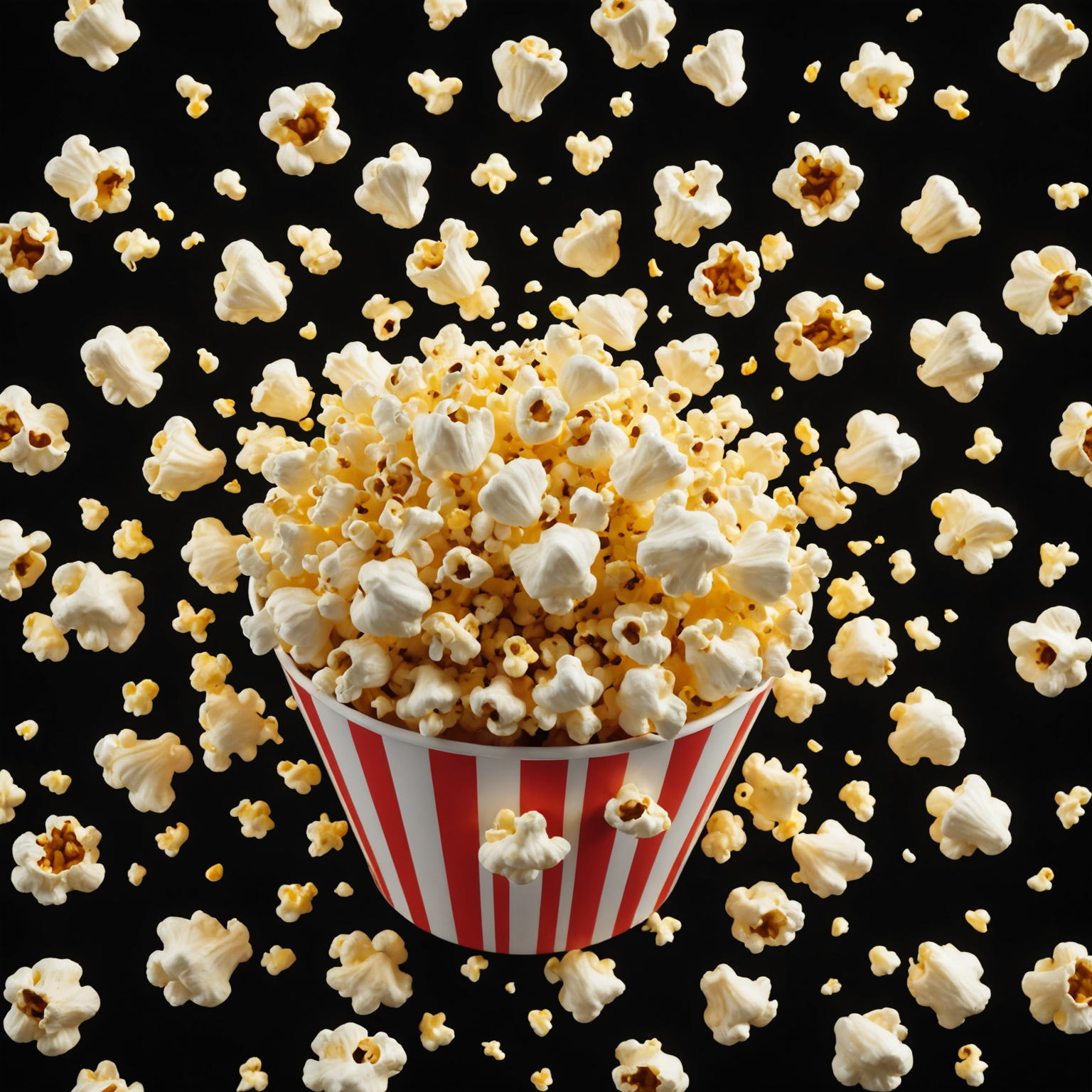Why popcorn actually explodes when it pops
 A popcorn kernel exploding in slow motion, revealing the physics behind its famous pop.
A popcorn kernel exploding in slow motion, revealing the physics behind its famous pop.
The surprising science behind your favorite movie snack
By Peter Teoh, Science Writer
Popcorn isn’t just a tasty treat — it’s a tiny explosion happening right in your kitchen. When you hear that familiar “pop,” you’re witnessing a fascinating dance of physics and biology in action. But why exactly does popcorn explode? Let’s dive into the science behind the pop.
What’s inside a popcorn kernel?
Every popcorn kernel is like a tiny pressure cooker. Inside its hard shell, called the pericarp, there’s a starchy center mixed with a small amount of water. The pericarp is much tougher and thicker than the outer shell of regular corn kernels, which is super important for the popping process.
Heating up: turning water into steam
When you heat a kernel, the water inside starts to turn into steam. But because the pericarp is so strong, the steam can’t escape. Instead, pressure builds up inside, reaching about 135 pounds per square inch—almost nine times the pressure inside a car tire! The temperature inside the kernel rises to around 180°C (356°F), which is higher than the normal boiling point of water because the steam is trapped and superheated.
The big pop: pressure meets starch
Eventually, the pressure inside becomes too much for the pericarp to handle. The shell bursts open suddenly, releasing the steam and turning the starchy center inside out. This starch was heated so much that it gelatinized — meaning it became gooey and stretchy — and when it expands rapidly with the escaping steam, it cools quickly into the fluffy, white popcorn we love.
The popcorn jump and the science behind the sound
Scientists using high-speed cameras have even caught popcorn kernels jumping when they pop! As the shell cracks, a tiny starch “leg” shoots out, pushing the kernel a few millimeters to centimeters into the air. This motion is similar to how some plants and fungi spread their seeds. The famous “pop” sound? That’s the water vapor bursting out and the pericarp snapping open in milliseconds.
Why does moisture matter?
The right amount of water inside the kernel is key. Too little moisture, and the pressure won’t build enough to pop the kernel. Too much moisture, and the kernel might pop poorly or get soggy. That’s why popcorn manufacturers dry kernels to about 14% moisture — the perfect balance for popping.
Thermodynamics and gas laws in your snack
Popcorn popping is a real-world example of thermodynamics (how heat and energy move) and gas laws. The water vapor inside the kernel follows the ideal gas law, where pressure, volume, and temperature interact in predictable ways. This explains why the kernel bursts at a specific temperature and pressure.
Beyond popcorn: other popping grains
While popcorn is the superstar of popping grains, others like millet, quinoa, and amaranth also pop, but not nearly as dramatically. Popcorn’s unique combination of a tough shell, perfect moisture, and starchy interior gives it that explosive show.
Popcorn: More than just a snack
Next time you snack on popcorn, remember you’re enjoying a mini science experiment — heat, pressure, and rapid expansion all wrapped up in a crunchy bite. It’s a perfect example of how everyday things can be both fun and fascinating when you understand the science behind them.
Side Notes
- The “popcorn leg” is a starch projection that acts like a spring, helping the popcorn kernel jump when it bursts.
- The pericarp’s strength is about four times that of regular corn shells, which is why popcorn pops and regular corn doesn’t.
- The popping sound is caused by the sudden release of steam and the rupture of the kernel’s shell.
Trending Sidebar
- Why Does Microwave Popcorn Taste Different? Microwave popcorn often includes added oils and flavorings that change taste and popping efficiency.
- Science of Other Snacks: Ever wonder why chips crunch or soda fizzes? It’s all about physics and chemistry!
- High-Speed Cameras in Science: These allow scientists to see things too fast for our eyes — like popcorn popping, hummingbird wings, and even bullet impacts.
Reference links
- “The physics of popcorn: Watch the explosion in slow motion,” Los Angeles Times latimes.com
- “How popcorn got its pop,” Science News Explores snexplores.org
- “The science of popcorn,” Royal Society Blog royalsociety.org
- “How does popcorn pop?” BBC Science Focus sciencefocus.com
Leave a comment